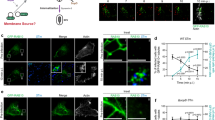Abstract
The new-world screw-worm fly, Cochliomyia hominivorax, is an obligate ectoparasite of domestic and wild animals, and in some cases may affect humans. Myiasis in the human neonatal period is a rare occurrence and almost exclusively found in neotropic areas. Although umbilical myiasis is well-recognized in animals, infestation of human umbilical cord and abdominal tissue is a rare occurrence. Once the diagnosis has been made, the treatment is usually straightforward and uncomplicated. In this article, a newborn infant from an urban area is reported with umbilical myiasis caused by fly larvae of C. hominivorax. The blowfly causing this infestation belongs to the family Calliphoridae (Diptera) and the genus Cochliomyia that usually infests only open wounds of animals.
This is a preview of subscription content, access via your institution
Access options
Subscribe to this journal
Receive 12 print issues and online access
$259.00 per year
only $21.58 per issue
Buy this article
- Purchase on Springer Link
- Instant access to full article PDF
Prices may be subject to local taxes which are calculated during checkout
Similar content being viewed by others
References
James MT . The flies that cause myiasis in man. US Dep Agric Misc Pub 1947; 631: 1–175.
Szekely R, Herreros C, Rojo M . Human umbilical myiasis by Phaenicia sericata in a newborn child. Bol Chil Parasitol 1975; 30: 25–26.
Zupan J, Garner P, Omari AAA . Topical umbilical cord care at birth The Cochrane Database of Systematic Reviews 2004, Issue 3. Art. No. CD001057.pub2. DOI: 10.1002/14651858.CD001057.pub2.
Bowry R, Cottingham R . Use of ultrasound to aid management of late presentation of Dermatobia hominis larva infestation. J Accid Emerg Med 1997; 14 (3): 177–178.
Hall M, Wall R . Myiasis of human and domestic animals. Adv Parasitol 1995; 35: 257–334.
Thomas DB, Mangan RL . Oviposition and wound-visiting behavior of the screwworm fly, Cochliomyia hominivorax (Diptera: Calliphordae). Ann Entomol Soc Am 1989; 82: 526–534.
Hammack L, Holt GG . Responses of gravid screwworm flies, Cochliomyia hominivorax, to whole wounds, wound fluid, and a standard blood attractant in olfactometer test. J Chem Ecol 1983; 9: 913–922.
Hammack L . Oviposition by screw-worm flies (Diptera: Calliphoridae) on contact with host fluids. J Econ Entomol 1991; 84: 185–190.
Hammack L, Bromel M, Duh FM, Gassner G . Reproductive factors affecting responses of the screw-worm fly, Cochliomyia hominivorax (Diptera: Calliphoridae), to an attractant of bacterial origin. Ann Entomol Soc Am 1987; 80: 775–780.
Mariluis JC, Schnack JA, Cerverizzo I, Quintana C . Cochliomyia hominivorax (Coquerel, 1858) and Phaenicia sericata (Meigen, 1826) parasiting domestic animals in Buenos Aires and vicinities (Diptera, Calliphordae). Mem Inst O Cruz 1994; 89: 139.
Author information
Authors and Affiliations
Corresponding author
Rights and permissions
About this article
Cite this article
Duro, E., Mariluis, J. & Mulieri, P. Umbilical myiasis in a human newborn. J Perinatol 27, 250–251 (2007). https://doi.org/10.1038/sj.jp.7211654
Received:
Revised:
Accepted:
Published:
Issue Date:
DOI: https://doi.org/10.1038/sj.jp.7211654
Keywords
This article is cited by
-
Neonatal umbilical cord myiasis in New Jersey
Journal of Perinatology (2014)



